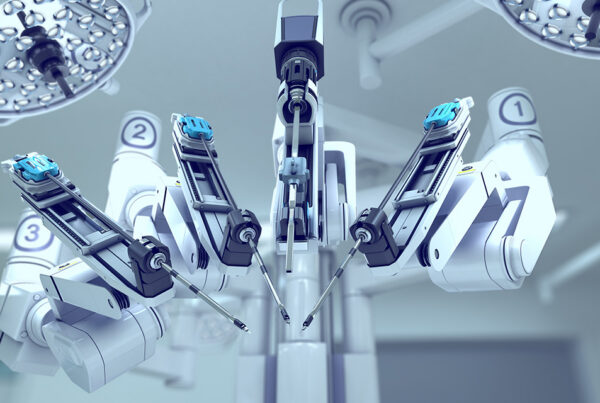Mariana Romero Roy
When it comes to improving Latin American healthcare, much of the conversation centers on addressing inequalities and expanding universal access to care. However, a more subtle yet still important problem is bubbling under the surface at many Latin American hospitals and medical centers: the issue of older and obsolete medical equipment being used well past the recommended guidelines.
The Trouble with Old Equipment
There are several reasons why relying on older equipment can be problematic. For one, the imagery or data provided from these machines is potentially inaccurate, which can lead to misdiagnoses. And when it comes to machines that emit radiation, such as X-rays, old equipment can potentially be dangerous to both the patients and operators.
Yet despite these concerns, some hospitals have legitimate reasons for trying to get the most from their older equipment. In many cases, they are public centers with limited budgets. This can put a damper on their long-term procurement planning, leading to machines being used when they should be phased out. Add in supply chain bottlenecks and increasing price concerns due to tariffs and uncertain international trade pricing, and you can see why this is a growing concern across the region.
What the Data Suggests
While some anecdotal stories have put the percentage of obsolete medical equipment in the developing world at 90% or higher, the real data is not that dire. Nevertheless, it shows major room for improvement across the region. A 2011 study of 112,040 pieces of medical equipment in the developing world showed that overall, 38.3% of medical equipment in developing countries was out of service. Here’s a closer look at the numbers at the time of the study:
Country: % of Equipment out of Service
- Belize: 40%
- Costa Rica: 0.83%
- El Salvador: 25.51%
- Guatemala: 17.72%
- Honduras: 15.54%
- Nicaragua: 29.11%
- Panama: 7.12%
- Bolivia: 40.50%
- Colombia: 45.56%
- Ecuador: 40.82%
- Peru: 43.36%
- Venezuela: 47%
Some of these numbers have undoubtedly changed since the time of the study, but it certainly shows a trend across the Latin American region. What’s more, some of the most critical pieces of medical equipment, such as X-ray machines and sterilizers, were also the most likely to be out of service.
A COVID-19 Case Study
While the data on obsolete equipment in Latin America is concerning all on its own, it becomes even more alarming when you look at some of the real-world impacts of outdated medical devices. Simply put, outdated technology can become a health risk. It can lead to delayed or inaccurate diagnoses, increased machine downtimes and repair costs, higher radiation exposure risks from older imaging devices, difficulty integrating with modern health IT systems and many other issues.
One good example of the real-world impact of obsolete medical equipment came during the COVID-19 pandemic in Mexico. As the disease spread, there was a need to produce X-ray images of the thorax in an expedited manner, and Mexico’s X-ray equipment was not up to the task. Instead of digital radiology systems that quickly deliver a high-quality digital image to a nearby computer, many X-ray generators in Mexico were not even digital at the time of the COVID-19 outbreak. Mexico’s inability to meet the demand of the moment has led to a shift toward digital radiology systems in the region ever since.
How Hospitals & Health Centers Should Evolve
This example of the Mexican X-ray market before and after COVID-19 is a good example of how the Latin American market can and will evolve when it needs to. The problem is that it shouldn’t require a global pandemic for regional facilities to make the changes needed to support their patients.
Increasingly, hospitals and medical centers that are staying up to date on their equipment needs in the region are taking a data-driven approach to modernization. This requires both public health organizations and private hospital networks to gather and act upon equipment lifecycle data in their facilities. Strategic investments should target critical equipment with the highest obsolescence risk.
By forming business partnerships with device manufacturers, organizations can gain support for their equipment forecasting to ensure they get the updated equipment that they need, when they need it. Many medical equipment companies also offer trade-in programs, so that facilities can upgrade their equipment at a more reasonable cost.
If you want to see how your market, country, or facility stacks up, request a customized report from GHI or explore how our data solutions like HospiScope and SurgiScope can support smarter equipment planning.
Key Takeaways for Medical Companies
If you’re a medical sales representative serving the region, the challenges of breaking through the budgetary constraints and convincing administrators of the importance of upgrading can be great. One strategy that has been effective for many companies in the region is focusing on a “good enough” mentality. This is not an approach you would ever take in your customer-facing marketing and PR campaigns, but when it comes to your under-the-hood sales strategy for the Latin American public sector, “good enough” can be surprisingly effective and drive major sales.
Consider it this way: The public sector still wants the very best that they can afford for their patients. But the reality is that they may not have the budget for the latest equipment model with all the bells and whistles. However, if you can craft a strategy that provides them with a high-quality, reliable model at a lower price, then your chances are good at appealing to them – and maintaining their business for years to come.
“If you talk to private hospitals, they may want AI, robotics and the latest equipment. Other hospitals have very basic needs,” says Hector Orellana, Vice President of North Latin America for Medtronic. “You need to understand both sides to navigate the differences and approach them with the right services. We must be adaptable to help all patients as effectively as possible.”
Next Steps
Contact GHI to learn more about equipment trends and their potential impact on the health care industry in Latin America. Our team of researchers can provide the analysis you need to gain valuable insights and support strategic decision-making in your industry.



